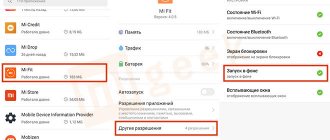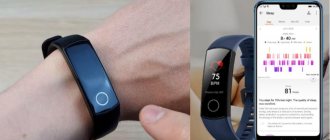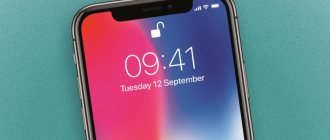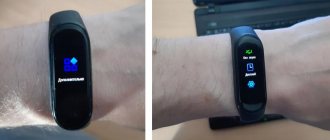The first electronic devices that tracked indicators of a person’s physical condition appeared in the second half of the twentieth century. in astronautics. Various sensors were attached to the bodies of space explorers and transmitted information about the main parameters of the cardiovascular and respiratory systems to the Earth and the on-board computer.
With the development of nanotechnology, designers were able to fit all the complex equipment into the body of a watch and wrist bracelet. Since that time, they have become the property of not only astronauts and athletes, but also of any person who wants to lead a healthy lifestyle with a scientific approach. To control physical activity and obtain information about the current state of the body, a person needs to know how to use a fitness bracelet so that its operation gives the most positive results.
Types and features of fitness bracelets
One of the slang names for the device sounds in English as tracker, which translated into Russian means “satellite, beacon.” These terms reflect the role of the gadget - to always be on the go with the user and provide him with the necessary information.
There are devices that perform many different functions, and those that are limited to narrow capabilities. Therefore, the user needs to determine for what purposes he needs a “smart” gadget.
Types of tracker applications:
- It finds its best use during sports: monitoring parameters when running, cycling and swimming.
- A popular feature among users is the pedometer, which is used to monitor physical activity throughout the day. According to the recommendations of sports doctors, a person needs to walk 10 thousand steps per day (day).
- Some people use it as a replacement for a smartphone when there is no need to take it with them. The bracelet does not interfere or interfere with running or training. At the same time, it is able to display many actions from the smartphone: received notifications, calls and SMS messages.
- During everyday use, the trackers can last for hours and count calories burned and analyze the fatty acids of the food consumed.
Depending on personal needs, a person needs to pay attention to models with those functions that are important to him. The price of the device also plays an important role.
Table 1. Comparative parameters of common tracker models and their features.
| № | Technical specifications | Xiaomi Mi Band 3 | HUAWEI Band 3 Pro | Garmin Vivosport |
| 1. | Display | Monochrome, OLED, touch, diagonal - 0.78˝ | Color AMOLED, diagonal - 0.95˝ | Sensory. In sunlight - bright, MIP function. Resolution: 72×144 pixels |
| 2. | Linear dimensions | Weight: 20 g (0.02 kg) | Weight: 23 g (0.023 kg) | 21.0x10.9 mm Weight: 24.1 g (small model); 27.0 g (large model) |
| 3. | Pairing with your phone | Bluetooth, based on Android 4.4, iOS 9 and above | Bluetooth | Bluetooth |
| 4. | Moisture protection | IP68 rated: for swimming without diving | Immersion up to 50 m | Dust and moisture protection. Withstands pressure up to 5 ATM. |
| 5. | Notifications | SMS, email, Twitter and Facebook, incoming calls | Calls, events in calendar, mail and social networks | Calls, events in calendar, mail and social networks |
| 6. | Battery life | 18-20 days | With GPS enabled: up to 7 hours, without - up to 20 days | Smartwatch: up to 7 days. With GPS enabled: up to 8 hours. |
| 7. | Functions |
| The model is equipped with GPS and can control the route while running. Heart rate monitor. Sleep monitoring and analysis: tips for improving the quality of rest. | GPS support, VO2 max level calculation.
|











